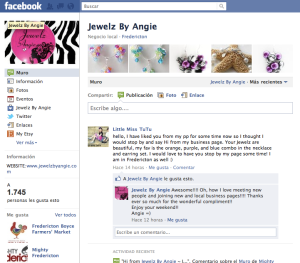Here are a few tips how you can motivate your target audience to keep following you on your Social Media channels:
– Study your audience. Knowing your target audience is a big advantage for you. If you know what your customers like, what they want and who they are you can adapt your content and communication on your platforms.
– Use interesting and eye-catching titles on Facebook, Twitter, your Blog and other platforms. It is better if you don´t use the same titles on all your platforms although it would save time. But you might have a different target audience on each network. For example on LinkedIn you usually interact with professionals whereas on Facebook you are mostly connected with a more informal and younger audience.
The platforms also display the content differently, for example Twitter only allows you to have 140 characters which you should use wisely without loosing any content. Whereas on Facebook you can use more words for the title and it even shows part of the text you are publishing (see picture).
– Be interactive is the essential thing. Use different campaigns to keep your audience visiting your platform, for example Starbucks in Spain offered a 50% discount for their Fans on Facebook for a Mocha Frappuccino after 8 pm during July this year. Fans could print the voucher and bring it to any Starbucks Coffee Shop and received the discount.
Here is another example by Jewelz by Angie. Every week they have a contest where you can win their jewellery. On their they put a Link to the contest. So people are coming back to the Fanpage because they want to win jewellery rather than buying it. 
– The right balance. Another important point is not to bombard your followers with Marketing messages but neither ignore them, because then they will stop following you. For example try to publish regularly a Blog post, maybe weekly. On Facebook I would suggest to post every day or at least every second day to fill your Fanpage with content. If it looks empty or the date of the last post was 2 weeks ago your Fans think that nothing is happening on the page and might not come back. On Twitter I suggest to tweet 1 to 2 tweets a day. If you tweet to much, people feel overwhelmed and bombarded by so many tweets and might stop following you.
– Try to be personal. An example is the canadian company Freshbooks and how they surprised and made one of their customers happy with the help of Social Media. Here is an excerpt from Social Media Marketing All-in-One For Dummies by Jan Zimmerman and Doug Shalin who talk about this case study:
 Maybe you have other tips and suggestions? You are welcome to add them into the comment section below.
Maybe you have other tips and suggestions? You are welcome to add them into the comment section below.

















